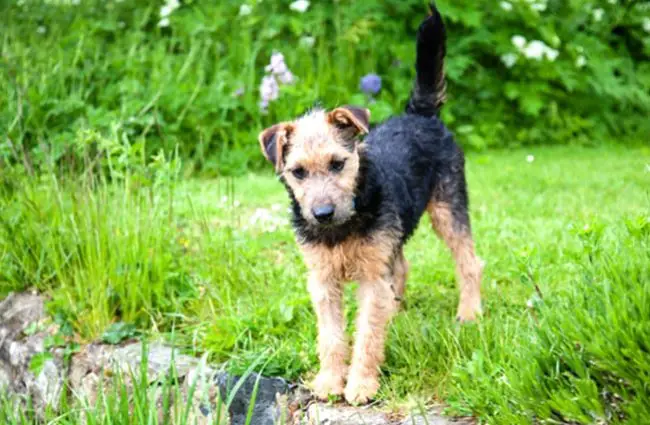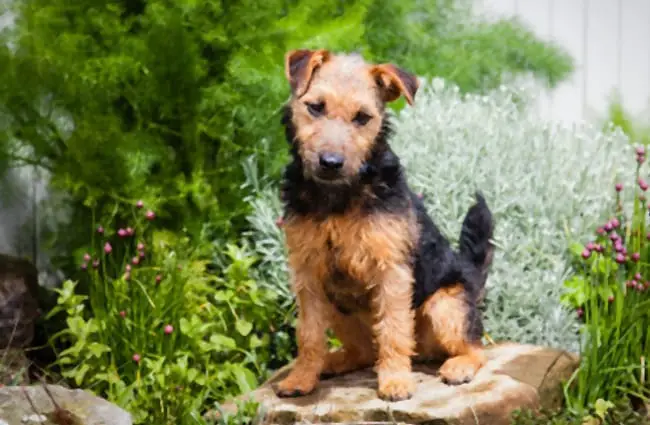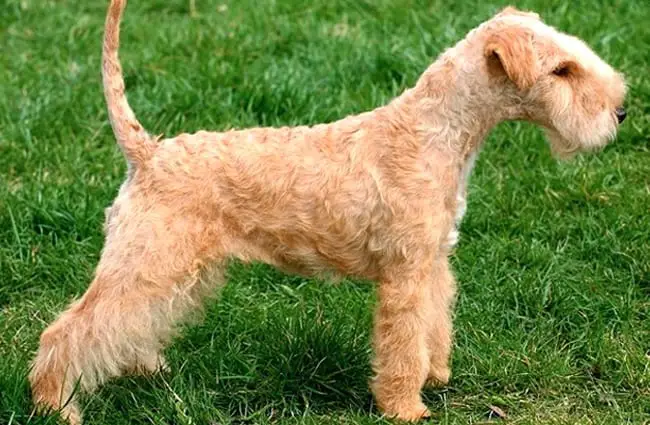The Lakeland Terrier is a classic example of the terrier group, an efficient and lively specimen. Humans bred them to hunt foxes in rural areas of Britain. These are not fussy showmen, but truly working-class dogs. Most individuals today do not have earn their keep anymore, but these dogs still have that dynamic terrier attitude. Read on to learn more about the Lakeland Terrier.
Description of the Lakeland Terrier
The Lakeland Terrier lives up to its breeding as a true fox hunter. They were meant to catch foxes that were hurting rural Britain’s flocks of sheep. This meant that they had to run quickly as well as dig into tight burrows.
The breed is known for its rectangular shape. They are small, but well-muscled – certainly not fragile small dogs.
They are also known for their harsh, low-shed coat. Owners often leave the fur longer around the muzzle and head. These dogs come in many, many colors. These include black, black and tan, blue, blue and tan, grizzle and tan, liver, red, red grizzle, and wheaten.
Life Expectancy and Size
The Lakeland Terrier is a large dog wrapped up in a cute, but capable, package. They stand between 14 and 15 inches at the shoulder, and weigh around 17 pounds. These dogs tend to be sturdy.
This breed has almost no breed specific health issues, and they tend to live fairly long lives. Their life expectancy is between 12 and 15 years.
Protective Ability
This breed makes a good watchdog. Like many terriers, the Lakeland Terrier is observant and unafraid to make his voice heard. However, these dogs are quite small and cannot offer any real protective abilities besides a built-in alarm system.
Training
Generally, the Lakeland Terrier is fun and easy to train. Be aware that they don’t like too much repetition, or they may become bored. Rather, keep sessions short and varied. This will appear to the classic terrier personality.
As with all dogs, Lakeland Terriers respond best to reward- and relationship-based methods.
Energy Level
These dogs are high energy, and need daily mental and physical activity to keep them sane. Turning them loose in the yard to run around is not enough. Lakeland terriers need to have something to think about, as well as adequate social time with their families. This will make them much more manageable family members!
What Living with a Lakeland Terrier is Like
This breed is generally cheery, relatively easy to care for, and well suited to the average home. Their compact size, yet athletic frame, makes them a good match for all but the most athletic owners.
However, owners should appreciate the terrier tenacity. These are intense, hardworking dogs that do best with a job (even if that job is just retrieving a ball).
Most Lakeland Terriers are remarkably healthy and long-lived.
Care of the Lakeland Terrier
These hardy dogs are well suited to a variety of environments. Although they have intense personalities, they are generally easy care.
Environmental Needs
These dogs have enough hair to protect them in most situations, although they may become cold in extreme settings, especially if their hair is short. Still, their breeding for the harshest environments means they’ll do well when out playing in the snow. They should do just fine in most settings.
Exercise Needs
These dogs are adaptable to a variety of kinds of exercise. It’s most important that they receive some sort of activity to keep them occupied. They enjoy being around their humans, so walks are a must.
Many Lakeland Terriers enjoy safely fenced yards so that they can romp and explore. It’s important to keep them company and engage them in play. This will ensure they are truly challenging themselves.
Shedding and Grooming
This is a low shedding breed. Their special coat traps hair and dander. Not only will this keep the house clean, but it can be good for people who suffer from allergies.
Although not strictly necessary, Lakelands need frequent brushing to keep their wiry coats healthy and looking good. They will also need to be hand stripped or clipped every month or two. Most people these days do not deal with hand stripping, which involves pulling out individual hairs. This can be both time-consuming and expensive.
Ideal Home Environment
This breed is perfect for an active family. They love joining in on activities, and will quickly become bored if their family is always away at work.
Lakelands have a classic terrier personality. These are intense, active dogs. Families should not be looking for a cuddle bug, but rather a vivacious companion. They can get on with well-behaved children and other pets, but socialization is essential. Small children prone to teasing can sometimes bother these dogs.
Health Concerns
This breed does not have any concerns specific to their lineage. Like all dogs, they may begin to develop joint and eye problems as they age. Keep the Lakeland Terrier toned and at a healthy weight to ensure they will live out their full potential.
Behavior Problems
Many of these dogs are known escape artists. Excitable and mischievous, they are very good at finding holes in faulty fences.
Some Lakelands have quite the prey drive, and can chase after small creatures. They may bark if restrained from pursuing their desired prey. Obedience lessons, starting early, can help override this tendency.
Some individuals are also possessive with food, especially with other dogs.
























![Red Angus Closeup of a beautiful Red Angus cowPhoto by: U.S. Department of Agriculture [pubic domain]https://creativecommons.org/licenses/by/2.0/](https://animals.net/wp-content/uploads/2020/03/Red-Angus-4-100x75.jpg)

